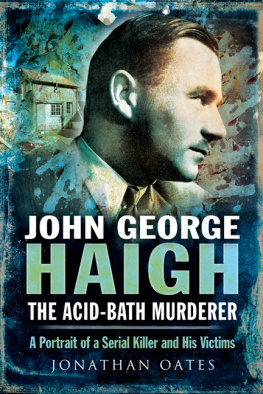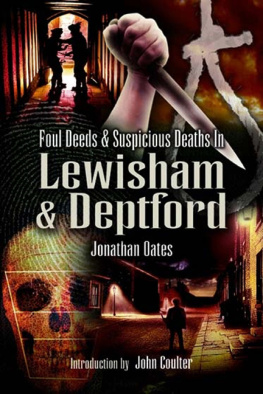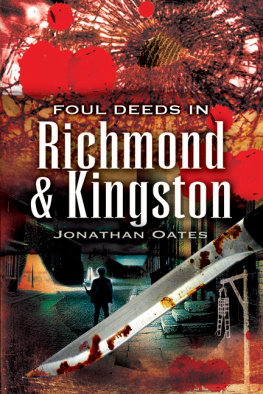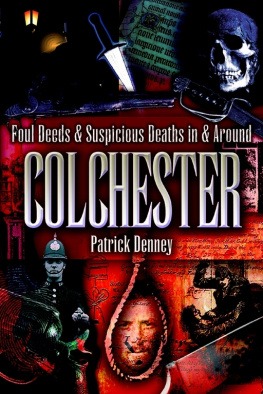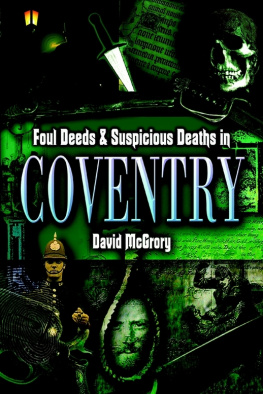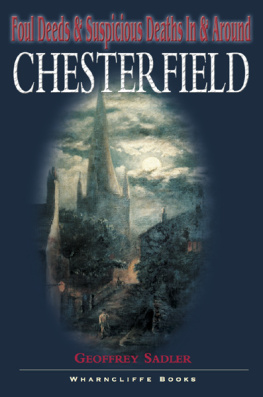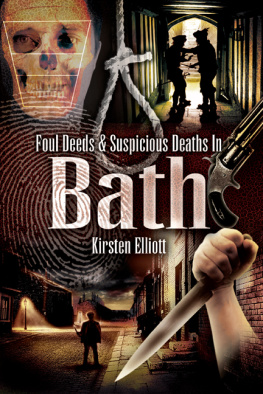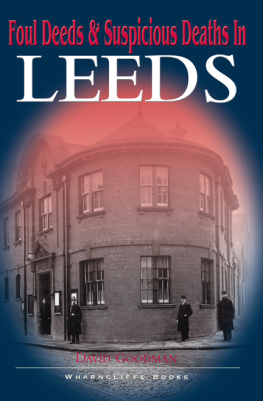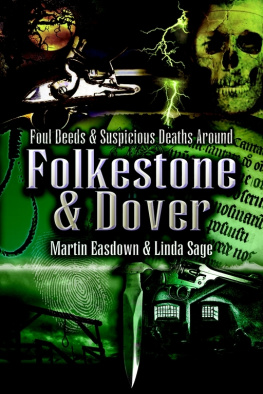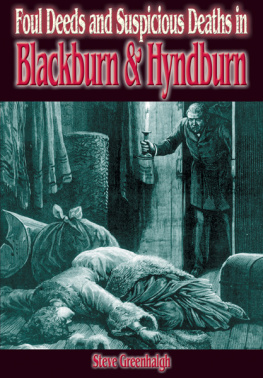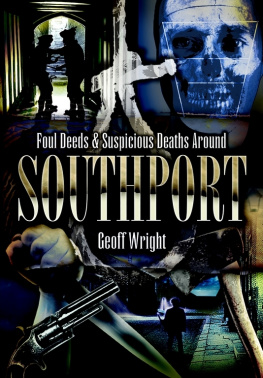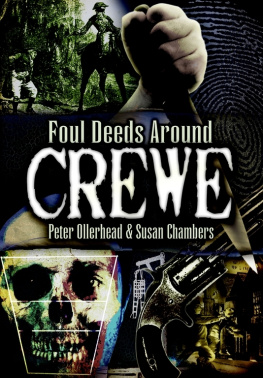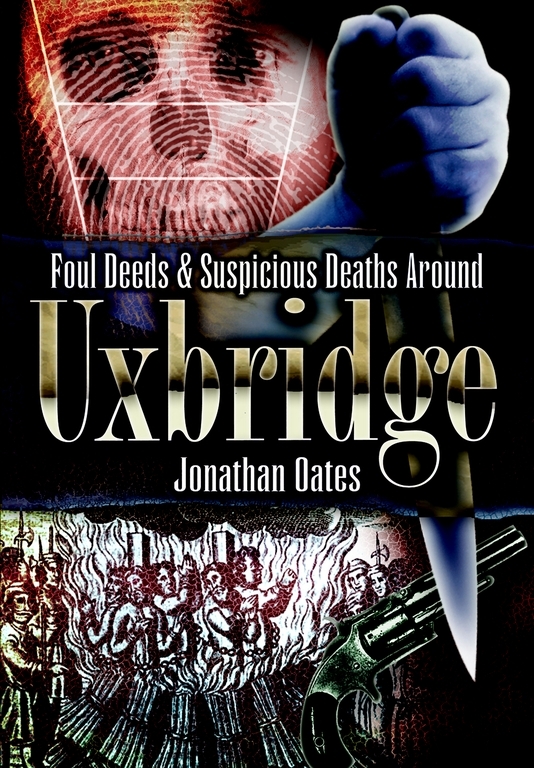PRIMARY SOURCES
Manuscript
The National Archives: Metropolitan Police, MEP20/1 5 Murder and Manslaughter Files; MEP02/1723, MEP03/1735; CRIM1/731, 964, 1735, 4070; HO64/7; Will of William Howard
Uxbridge Library: Crime file: depositions relating to the murder of Mr Howard, 1816 1817
Principal Registry of the Family Division: Will of James Gibbons
Printed
The Annual Register , 1816.
Buckinghamshire Advertiser , 1869
Calendar of State Papers Domestic, Henry VIII, 1530 1534 .
Morning Courier , 1816
The Times , 1839, 1869, 1870, 1884, 1938, 1954, 1961, 1962 3
Southall-Norwood Gazette , 1895, 1899, 1906
Middlesex County Times , 1895, 1934
Middlesex Advertiser and Gazette , 1884, 1895, 1899, 1906, 1954, 1962, 1963
The Illustrated Police News , 1895, 1937
Sunday Telegraph , 1983
Foxes Martyrs
G Hutson, Recollections of Uxbridge (1985)
Kellys Directories for Middlesex
Middlesex County Records: Sessions Rolls , vol, 1 (1886)
C Harper, Rural Nooks around London (1907)
J Bulloch and H Miller, Spy Ring (1961)
Census Returns, 1851 1901
M S Briggs, Middlesex, Old and New (1934)
St Johns Hillingdon, Parish register transcripts
Electronic
Oldbaileyonline
SECONDARY SOURCES
Oxford Dictionary of National Biography
E Bowlt, Ruislip Past (1994)
C Cotton, Uxbridge Past (1994)
A H Cox, West Drayton and Yiewsley through the Centuries (1983)
G R Elton, Star Chamber Stories (1958)
Furneaux, Criminal Cases , vol. 2 (1954)
A Neames, Elizabeth Barton (1971)
P Read, Denham Murder Postscript, Hilliingdon Family History Society Journal , 77 (2007)
Victoria County History for Middlesex , vols 3 and 4
Conclusion
I t is now time to draw some conclusions from this examination of murders in and around Uxbridge. Of the sixteen cases where murder definitely occurred, all the killers but one were male. Each only killed one victim, except for Owen (seven), Williams (three) and Garlick (two). Of these twenty-four victims, six were men, eight were children and ten were women. Five killers used knives or daggers, in eleven cases bludgeons were used, three were killed by gas, two were strangled, one was shot and another was killed by a chopper. One was drowned. Money was the uppermost motive with two killers, revenge for another two, three killed because of verbal provocation, insanity and drunkenness each led one killer to kill, the desire to conceal his identity lead to another murder, and one died due to a double suicide. Five motives are unknown. As to the ultimate fate of the killers: six were sent to prison, two were executed, one was transported, one committed suicide, one was acquitted and four were undetected. One may have been sent to Bedlam. A third of the murderers whose deeds chronicled here escaped punishment. These crimes took place throughout what is now the modern borough of Hillingdon, with two each in Harefield, Hayes, Uxbridge and West Drayton, three in Ruislip and Yiewsley and one in Northwood.
Yet there were long periods of time when no murders were committed none being recorded between 1816 and 1837, 1839 and 1869 and 1906 and 1934 for instance. Since the 1930s, no decade had been free of murder, though this may be in part due to an increased population. Even so, to have four murders in the 1930s, five in the 1940s and six in the 1950s (on average less than one per year) is hardly an epidemic by modern standards. Recent figures for 2005 7 record ten, which is a low number among London boroughs but far more than in the past (it exceeds the total number of murders committed in the 1930s and 1940s). This may be due to changes in society and the abolition of the death penalty.
CHAPTER 1
Uxbridge and its Environs
I t is impossible to offer anything resembling a complete history of Uxbridge and its environs in a few pages and the interested reader will note a number of books for further reading in the bibliography. What shall be attempted here is a very brief introduction to a few salient facts about the districts past. The places to be briefly described here are those within the modern borough of Hillingdon, notably Uxbridge, Ruislip, Northwood, West Drayton, Yiewsley, Hayes and Harefield.
For most of its history, the district was rural and by twenty-first-century standards, very sparsely populated. At the time of the Domesday survey in 1086, there were a number of small hamlets here. There was the manor of West Drayton, with a population of about 100. The manor of Ruislip was also in existence. During the Middle Ages, however, Uxbridge became the foremost settlement in the area, though it was part of the manor of Colham and a chapelry of Hillingdon, with St Johns as its parish church. This was partly because of its location; being by the river Colne, it was along the main road from London to Oxford, the Oxford Road, later the Uxbridge Road. It also became a market town by virtue of a royal charter, and the centre of manorial administration in the thirteenth century. Flour milling and brewing became Uxbridges major industries. In Tudor times, West Drayton was the home of courtiers such as William Paget. The Revd Henry Gold of Hayes involved himself in the dangerous game of religious controversy in this period, too, though to tragic effects, as noted in Chapter 3.
In the seventeenth century, national events affected Uxbridge. There were a number of outbreaks of plague; in 1603, 176 people died of it and in 1625, there were another 136 fatalities. But the great plague of 1665 only killed 40 inhabitants. Most in these localities seemed to be sympathetic to the Parliamentary cause in the Civil Wars, at least judging by the protestation rolls, where men attested their loyalty. In 1645, the two sides in the Civil War tried to make a peace treaty here, at a house later known as the Treaty House, though without success. In 1688, there was panic in Uxbridge caused by Irish soldiers deserting James IIs army as the invading William of Orange advanced towards London. It was feared that these desperate men would attack the town, though happily this was not the case. Uxbridges local prominence was noted by Daniel Defoe in the early eighteenth century, thus: a pleasant large market town, famous in particular, for having abundance of noble seats of gentlemen and persons of quality in the neighbourhood. John Loveday, an eighteenth-century antiquarian, noted the Crown as Uxbridges premier inn.
Most in the district were employed in agriculture, until the early twentieth century. But many worked in the brickfields in the eighteenth, nineteenth and early twentieth centuries, too. Giles Hutson recalled that these itinerant workers were rough and troublesome, especially when drunk. In 1861, 175 men in Yiewsley and West Drayton were brickies and 238 worked in farming. By the 1930s, the brickfields were coming to the end of their existence, but farms persisted throughout this period. The completion of the Grand Junction Canal in 1805 facilitated the brick industry as it meant the finished article could be cheaply and easily sent to London to be used in the building trade; and rubbish, including manure, was sent back, thus fertilizing the cultivated land.


